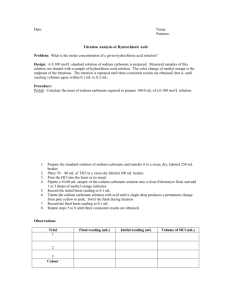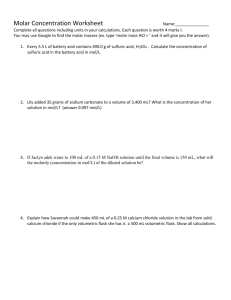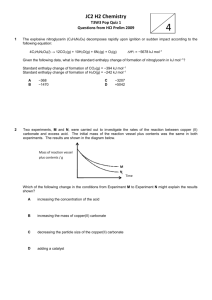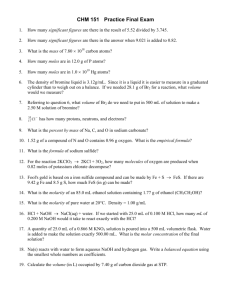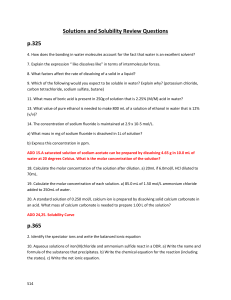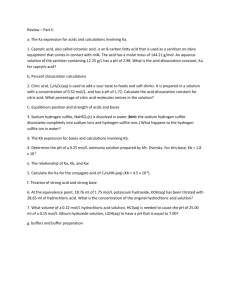SCH3U-01 Exam Review (Fall 2012)
advertisement
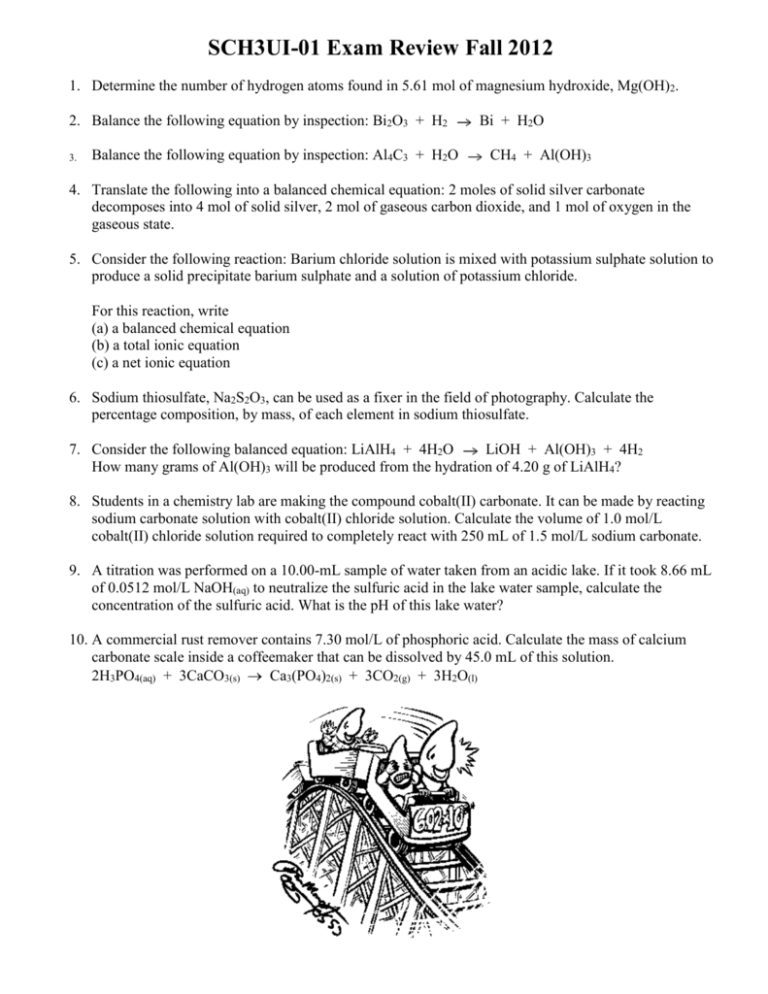
SCH3UI-01 Exam Review Fall 2012 1. Determine the number of hydrogen atoms found in 5.61 mol of magnesium hydroxide, Mg(OH)2. 2. Balance the following equation by inspection: Bi2O3 + H2 3. Balance the following equation by inspection: Al4C3 + H2O Bi + H2O CH4 + Al(OH)3 4. Translate the following into a balanced chemical equation: 2 moles of solid silver carbonate decomposes into 4 mol of solid silver, 2 mol of gaseous carbon dioxide, and 1 mol of oxygen in the gaseous state. 5. Consider the following reaction: Barium chloride solution is mixed with potassium sulphate solution to produce a solid precipitate barium sulphate and a solution of potassium chloride. For this reaction, write (a) a balanced chemical equation (b) a total ionic equation (c) a net ionic equation 6. Sodium thiosulfate, Na2S2O3, can be used as a fixer in the field of photography. Calculate the percentage composition, by mass, of each element in sodium thiosulfate. 7. Consider the following balanced equation: LiAlH4 + 4H2O LiOH + Al(OH)3 + 4H2 How many grams of Al(OH)3 will be produced from the hydration of 4.20 g of LiAlH4? 8. Students in a chemistry lab are making the compound cobalt(II) carbonate. It can be made by reacting sodium carbonate solution with cobalt(II) chloride solution. Calculate the volume of 1.0 mol/L cobalt(II) chloride solution required to completely react with 250 mL of 1.5 mol/L sodium carbonate. 9. A titration was performed on a 10.00-mL sample of water taken from an acidic lake. If it took 8.66 mL of 0.0512 mol/L NaOH(aq) to neutralize the sulfuric acid in the lake water sample, calculate the concentration of the sulfuric acid. What is the pH of this lake water? 10. A commercial rust remover contains 7.30 mol/L of phosphoric acid. Calculate the mass of calcium carbonate scale inside a coffeemaker that can be dissolved by 45.0 mL of this solution. 2H3PO4(aq) + 3CaCO3(s) Ca3(PO4)2(s) + 3CO2(g) + 3H2O(l)
